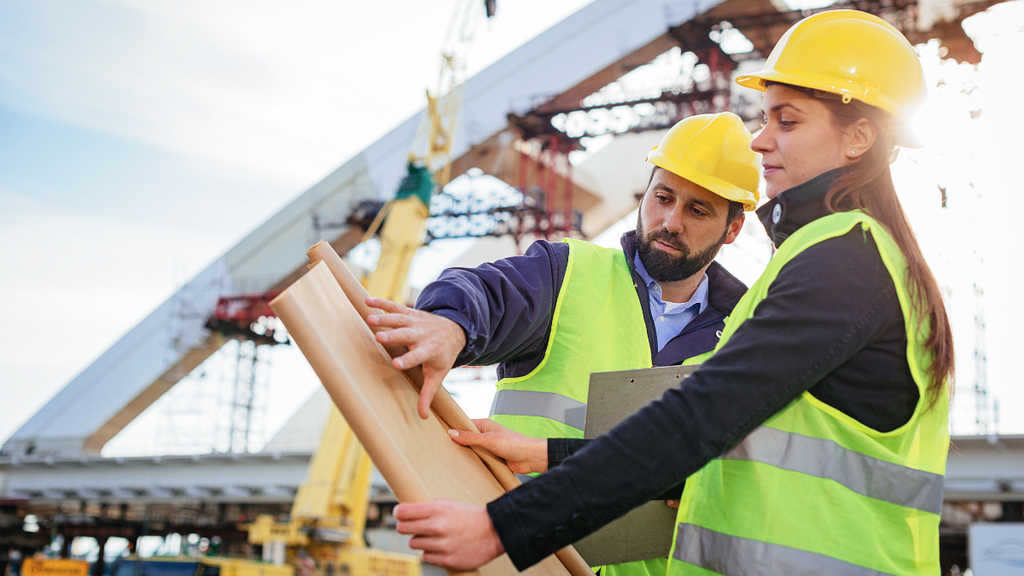The Definitive Guide for Geotheta
The Definitive Guide for Geotheta
Blog Article
What Does Geotheta Mean?
Table of ContentsThe Best Guide To GeothetaGeotheta for DummiesGeotheta - TruthsGeotheta - Truths3 Simple Techniques For Geotheta

They perform website examinations, gather samples, carry out lab examinations, and analyze information to assess the suitability of the ground for construction projects - Tailings Engineer. Based upon their searchings for, geotechnical engineers provide recommendations for structure layout, incline stability, retaining frameworks, and reduction of geotechnical dangers. They team up with other specialists, such as architects, architectural engineers, and construction groups, to guarantee that geotechnical considerations are incorporated right into the general job design and execution
By examining the behavior and properties of soil and rock, they can determine possible geotechnical threats such as landslides, dirt settlement, or incline instability. Their expertise aids protect against failings or crashes that could jeopardize lives and home. Below are some thorough tasks and duties of a geotechnical designer: Site Examination: Geotechnical designers conduct website investigations to gather information on subsurface problems.
They interpret the information to comprehend the properties and actions of the dirt and rock, including their toughness, leaks in the structure, compaction attributes, and groundwater problems. Geotechnical Analysis and Design: Geotechnical engineers evaluate the data accumulated during site investigations to examine the security and suitability of the site for building tasks. They execute geotechnical computations and modeling to evaluate aspects such as bearing capacity, settlement, slope security, side planet pressures, and groundwater circulation.
Fascination About Geotheta
Foundation Style: Geotechnical designers play a crucial role in designing foundations that can securely support the designated structure. They examine the dirt conditions and tons requirements to identify the appropriate structure kind, such as superficial foundations (e.g., footings), deep structures (e.g (https://giphy.com/channel/geotheta)., piles), or specialized strategies like dirt renovation. They take into consideration elements such as settlement restrictions, bearing capability, and soil-structure interaction to develop ideal foundation layouts
They examine construction plans, screen website activities, and conduct field inspections to confirm that the layout suggestions are followed. If unforeseen geotechnical concerns develop, they analyze the circumstance and offer suggestions for remediation or adjustments to the layout. Threat Analysis and Mitigation: Geotechnical designers assess geotechnical hazards and dangers connected with the job website, such as landslides, liquefaction, or soil disintegration.

Cooperation and Interaction: Geotechnical designers function very closely with various other experts involved in a task, such as engineers, architectural designers, and building groups. Efficient interaction and collaboration are vital to incorporate geotechnical factors to consider into the total project layout and building and construction process. Geotechnical designers supply technological competence, solution queries, and ensure that geotechnical requirements are met.
The Ultimate Guide To Geotheta
Here are some kinds of geotechnical designers: Structure Designer: Structure engineers specialize in creating and assessing foundations for frameworks. They evaluate the soil problems, load requirements, and site attributes to identify the most suitable foundation type and design, such as shallow foundations, deep foundations, or specialized strategies like pile foundations.
They examine the variables affecting slope security, such as dirt residential or commercial properties, groundwater conditions, and incline geometry, and create methods to avoid slope failings and mitigate risks. Quake Engineer: Quake designers concentrate on analyzing and designing frameworks to stand up to seismic pressures. They analyze the seismic threat of a website, assess soil liquefaction capacity, and create seismic style requirements to make certain the security and strength of frameworks throughout quakes.
They do area testing, gather samples, and assess the accumulated data to identify the dirt residential properties, geologic developments, and groundwater problems at a site. Geotechnical Instrumentation Engineer: Geotechnical instrumentation engineers concentrate on surveillance and determining the behavior of dirt, rock, and frameworks. They mount and maintain instrumentation systems that keep track of elements such as soil negotiation, groundwater degrees, slope motions, and structural variations to analyze performance and give very early cautions of possible issues.
How Geotheta can Save You Time, Stress, and Money.
They perform tests such as Learn More triaxial tests, combination examinations, straight shear tests, and leaks in the structure examinations to gather information for geotechnical analysis and design. Geosynthetics Designer: Geosynthetics designers concentrate on the design and application of geosynthetic materials, such as geotextiles, geogrids, and geomembranes. They utilize these products to boost dirt stability, strengthen inclines, supply drain remedies, and control erosion.
They tend to be investigatory individuals, which means they're intellectual, reflective, and curious. They are curious, methodical, reasonable, logical, and rational. Some of them are also social, indicating they're kind, generous, cooperative, person, caring, useful, empathetic, sensible, and pleasant - Consulting Engineers.
In the office environment, geotechnical engineers utilize specialized software program tools to carry out estimations, produce layouts, and analyze information. They prepare reports, evaluation project specifications, communicate with customers and group participants, and coordinate job tasks. The workplace setup supplies a helpful atmosphere for research study, analysis, and collaboration with other professionals entailed in the task.
Geotheta for Beginners
They frequently go to job websites to carry out site investigations, evaluate geotechnical problems, and gather information for analysis. These check outs include taking a trip to various locations, sometimes in remote or difficult surfaces. Geotechnical engineers may carry out dirt tasting, conduct examinations, and screen building and construction activities to ensure that the geotechnical elements of the job are being applied properly.
Geotechnical engineers additionally operate in specialized geotechnical research laboratories. In these facilities, they carry out experiments, carry out examinations on soil and rock samples, and assess the design properties of the products. Geotechnical laboratory designers work extensively in these environments, managing testing devices, running instruments, and taping data. They team up with other research laboratory staff to guarantee accurate and trustworthy testing results.
Report this page